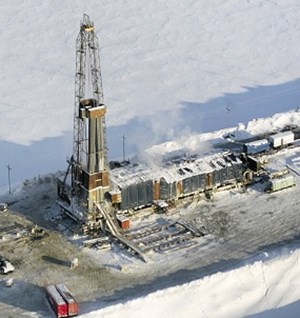Russia sets “record” drilling pace despite OPEC oil production cuts
(Bloomberg) – Russia’s oil firms are setting a record pace in their drilling this year, even as the country has agreed with OPEC+ to make longer production cuts.
Rigs drilled 14.7 thousand kilometers of production wells in Russia from January to June, 6.6% more than planned and 8.6% more than the same period in 2022, according to data seen by Bloomberg.
Last year “saw a post-Soviet production-drilling record, and given the data, I now expect a new high to be established,” said Ronald Smith, an oil and gas analyst at Moscow-based BCS Global Markets.
Russian oil firms accelerated their drilling even as the Kremlin ordered them to cut production by 500,000 bpd, initially for just a few months in retaliation for Western sanctions over Ukraine, and subsequently until the end of 2024 in coordination allies in the Organization of Petroleum Exporting Countries.
Until July, Russia’s high level of seaborne crude exports and robust domestic refining rates raised doubts among oil watchers about whether it was fully implementing these curbs. The country’s oil statistics have been classified, making it difficult to assess the progress of the cuts beyond assurances of Russian energy officials.
Russia’s high level of production drilling doesn’t necessarily send any kind of signal about its compliance with pledged cuts. The nation could be laying the groundwork to pump more after the OPEC+ deal expires next year.
“Development drilling doesn’t add production outright but contributes to future production capacity, which is exactly what Russian producers are doing right now,” said Viktor Katona, head crude analyst at market intelligence firm Kpler Ltd. It could be a sign that Russian companies don’t want to reduce their output any further, he added. Kpler estimates that Russia is pumping 10.7 million to 10.8 million barrels of crude and a light oil called condensate a day.
It’s also possible that the country’s drillers are simply doing what’s necessary to maintain current output, said Smith. “As Russia’s oil fields age, the country naturally requires more and more drilling to maintain the same production capacity, either in new fields or, more often, in somewhat harder to produce deposits,” he said.
Effect of sanctions. The new drilling highs come as the Russian oil industry faces unprecedented sanctions introduced by Western nations and their allies last year in condemnation of the war in Ukraine. Restrictions on supplies of energy equipment and technologies were intended to cut into Russia’s ability to drill and pump oil, a key source of revenue for the national budget.
The bans have so far proved less potent, partly due to a high share of domestic oil-service providers. In 2021, before the invasion, international companies accounted for just 12% of the Russian market, according to Dmitry Kasatkin, a partner at Kasatkin Consulting, formerly Deloitte’s research center in the region. In 2022, that share dropped to 9%, their estimates show.
In many cases, foreign providers were a unique source of high-tech services and equipment for the Russian industry. However, while two international service giants — Halliburton Co. and Baker Hughes Co. — exited the sanctioned nation, their expertise, equipment and personnel were not lost to the nation’s industry because the firms sold off their in-country businesses to the local management.
SLB, the world’s biggest oil-services provider, last month said it is halting shipments of products and technologies into Russia from its facilities worldwide. The step followed SLB’s earlier ban on supplies to the sanctioned nation from several western countries and a pledge to stop making new investments into its business in the country.



